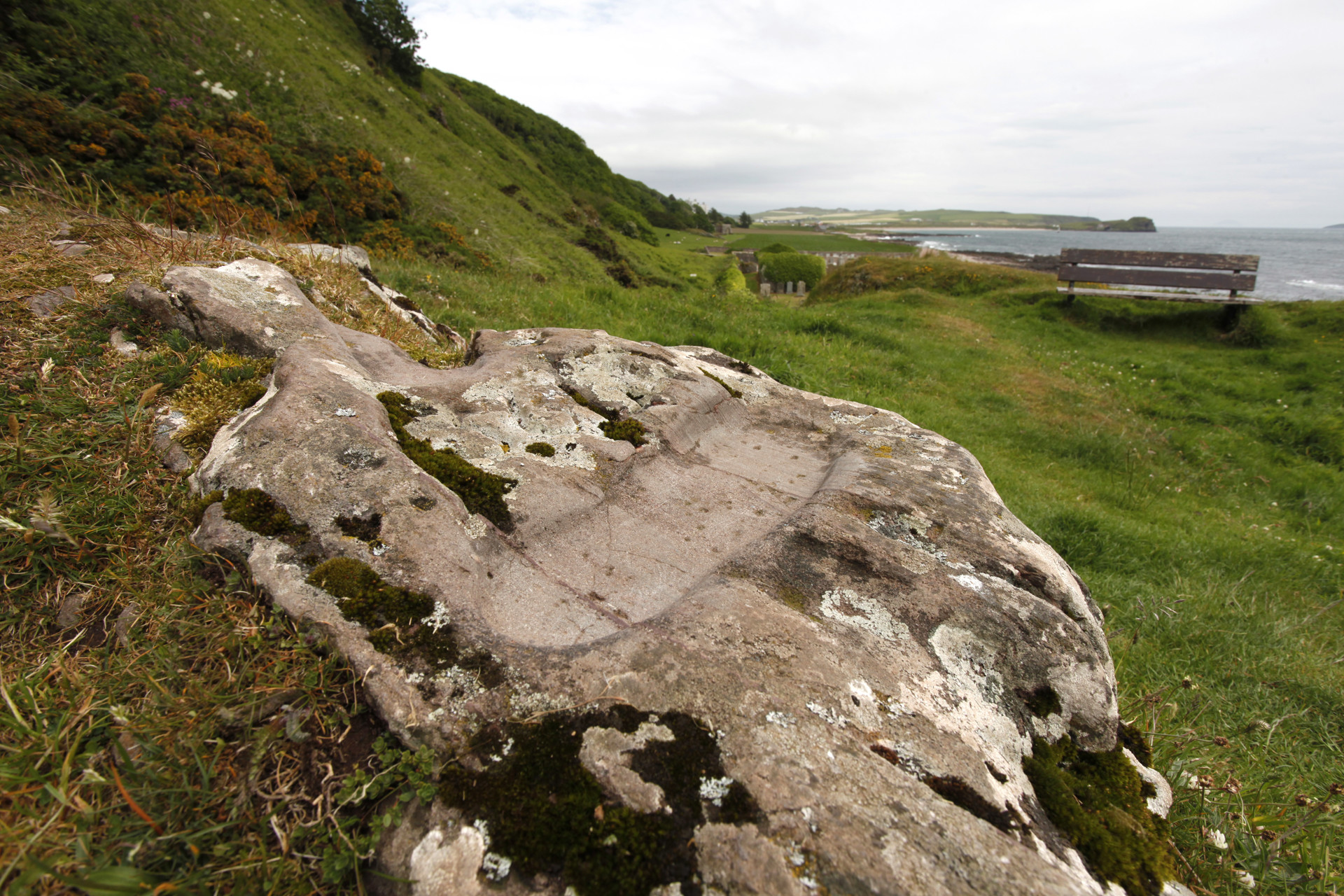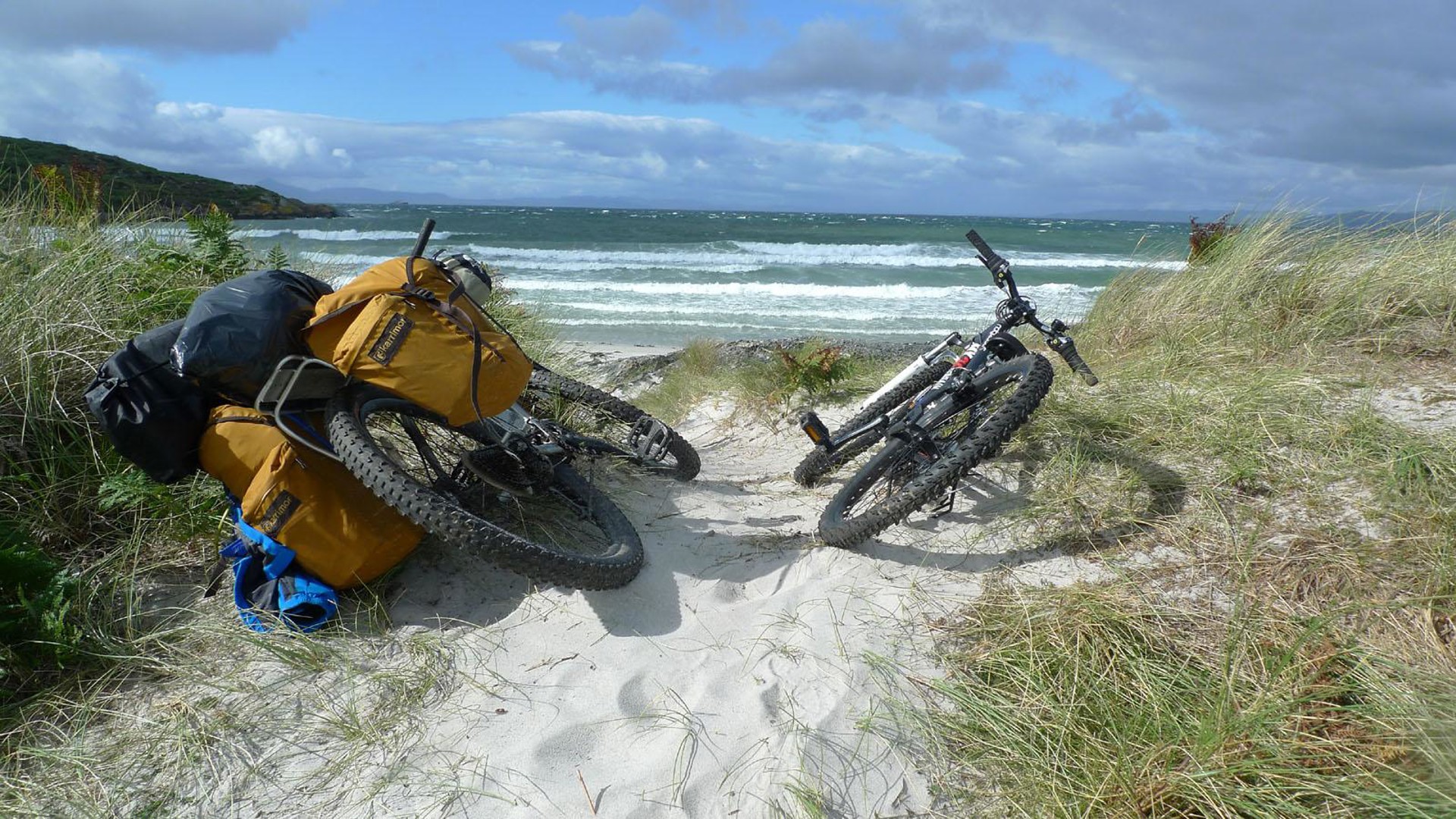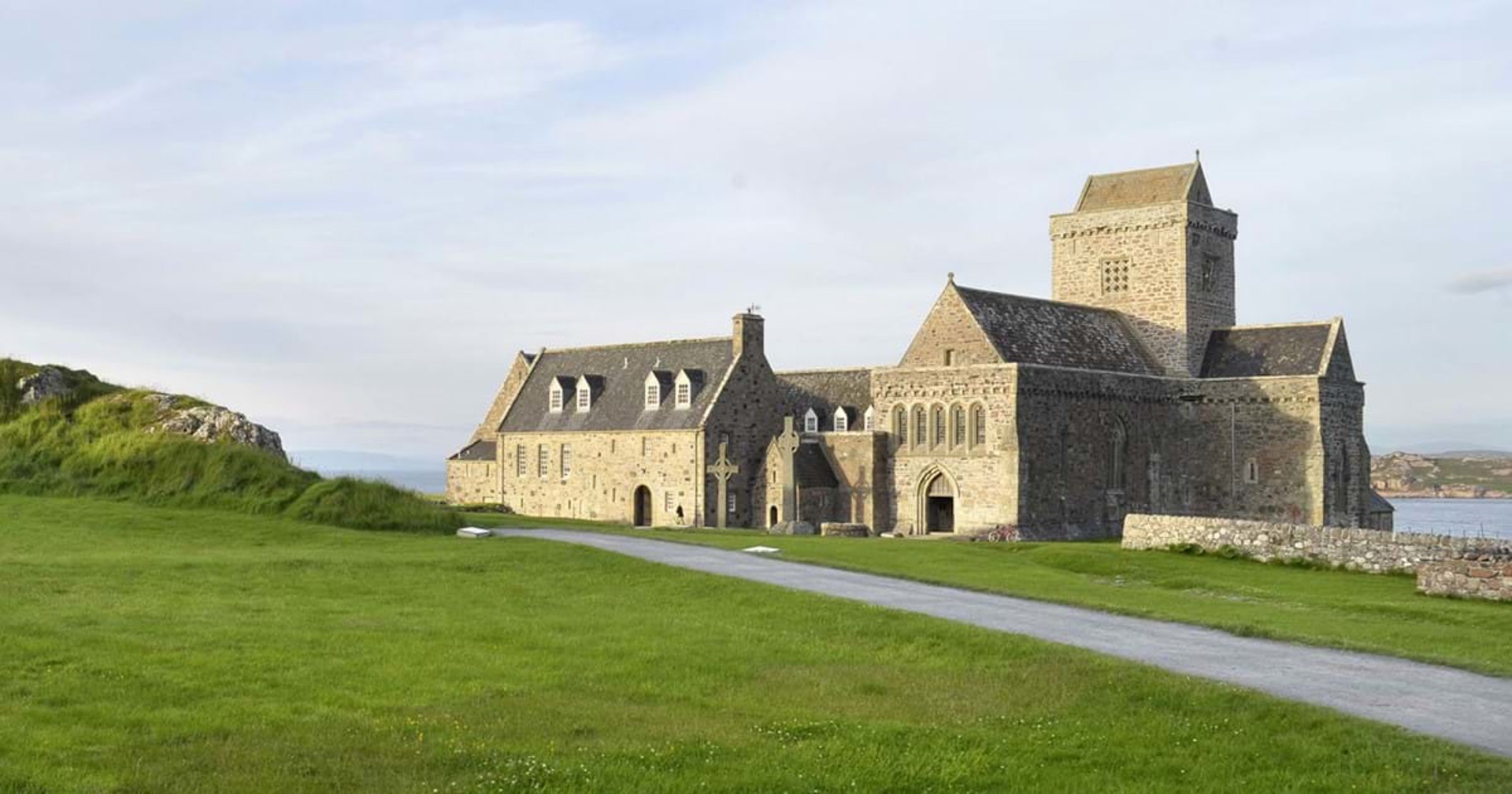Make a Pilgrimage to West and South-West Kintyre
Old Parish Church of Kilkivan
The ruins of this church stand within a graveyard about 180 metres South of the main road Campbeltown to Machrihanish Road, about a mile from the Golf links and village of Machrihanish. Dedicated to Saint Kevin, the church houses eight Medieval West Highland tombstones showing knights in bascinet helmets and mail / quilted tunics reaching to the knee. According to history, here stood what later became Campbeltown Cross, a gift from a son to his father. An inscription in Lombardic capitals reads: ‘This is the cross of Ivor MacEachran, sometimes parson of Kilkivan, and his son, sir Andrew, parson of Kilchoman, who caused it to be made.
Old Parish Church of Killean
Dedicated to Saint John, the parish church of Killean first came on record in 1222 AD, when Rodrick, son of Reginald, Lord of Kintyre, made a grant of certain lands for the service of a church in the name of the saint. In 1243, the church was granted by King Alexander 11 to the Bishop of Argyll, and remained so until the Reformation, but continued as a place of worship under the new Protestant Faith.
The ruins of the church house a collection of West Highland Grave slabs, the same depicting images of the warrior classes from the same era. It also houses other ancient funerary items from the early Christian era and Carved Medieval Stones.
Beacharr Standing Stone
Killean Church stands within its own graveyard on the West side of the Campbeltown to Tarbert Road about 1.5 kilometres South of Tayinloan. In recent times the ruins have been consolidated by a local Trust and are in a good state of preservation.
Old Parish Church of Kilkenzie and Priest’s Well
This church or perhaps more accurately called a chapel, dates to the 12th century and stands on a small knoll near the Campbeltown to Tarbert road 6 kilometres North of Campbeltown. It houses a host of Medieval tapered flagstones, most identified bearing the usual West Highland images of knights, swords, and ecclesiastical figures. The church is dedicated to Saint Kenneth, possibly one of Saint Ciaran’s group of 6th century Irish missionaries.
‘The Priests Well’ lies immediately to the North, some 270 metres East by Southeast of the church ruins.
Parish Church, A'Chleit
This Church was built in 1787 to replace the earlier parish-church of Killean. It stands on a prominent site overlooking the Atlantic Ocean and is of rectangular plan measuring 20.7 metres Northeast to Southwest by 10.2 metres transversely. It is an example of 18th century church architecture of a type widely built in West Highlands and Islands to replace earlier Medieval structures. The building's striking ‘bird cage’ belfry, surmounted on a triangular pediment, is probably a 19th century addition. A funerary monument commemorating Colonel Norman MacAlister of Clachaig, governor of Prince Edward Island, who died in 1810, is positioned immediately beside the pulpit.
The church stands on a sea promontory halfway between the villages of Muasdale and Tayinloan, approximately 17 miles North of Campbeltown.
Ballochroy Standing Stones
Ballochroy is considered the most spectacular set of megalithic monuments that cluster around south Argyll. It consists of three vertical stones, side by side, aligned with various land features.
Alexander Thom, known for his work on Stonehenge, maintained that the great length between the stones and the features of distant landscape lent precision to pinpointing the midsummer and winter solstices for ancient observers.
The flat face of the central stone indicates the mountain of Cora Bheinn, on the island of Jura, which is 19 miles away. The shortest stone also faces across the alignment, and points to Beinn a' Chaolais, the southernmost of the three Paps of Jura.



